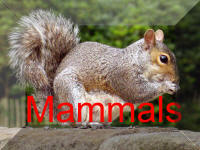Back To

Size
Wingspan to 9 1/2 " ( 24 cm) Head and Body 1 1/2 " ( 4.0cm). Average weight 4-8 g.
Description
Back fur is dark grey-brown with paler brown tips, tends to be darker than Brandt's bat. Belly fur is dingy-white to grey. Juveniles up to 12 months are darker than adults and may be close to black. Fur is long and dishevelled.
Whiskered and Brandt's bats are verey similar and therefore readyily confused. The teeth can be used to distinguish the two species. On the lower jaw of whiskered bats the third premolar (P3) is less than half the size of the second premolar (P2). On the upper jaw the protocone of P4 is small and shorter than P3
The male adult whiskered bats have a thin parallel-sided penis while the whiskered bat has a club-shaped penis.Diet & Foraging Behaviour
Forages along woodland paths, close to vegetation and often in the canopy. Also forages in open habitats, including over flowing water. Diet of whiskered bats mainly consists of Diptera including both crepuscular and diurnal species Whiskered bats are therefore likely to use a gleaning foraging strategy. Whiskered bats may take insects from the air by flying back and forth through a dense patch of insects or they may be taken directly from vegetation
Habitat
Open country, parks, gardens, villages, often near flowing water. Found in woodland but to a lesser extent than Brandt's bat

